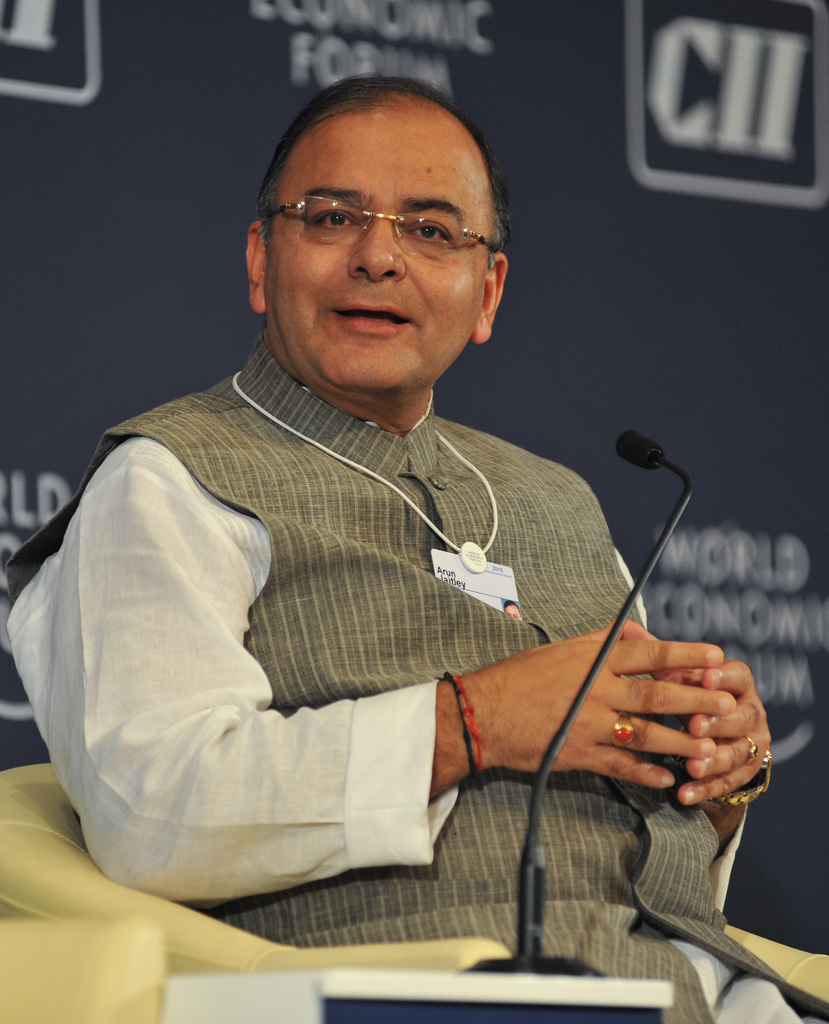The wholesale price index (WPI) inflation for September 2014 came in at a five year low of 2.38%. In a statement released yesterday, after the WPI inflation number was published, the finance minister Arun Jaitley said “It is heartening to note that we have been able to bring food inflation under control. Growth in vegetable and protein prices that have been contributing to the recent increase in inflation rates have shrunk thanks to the steps taken by the government. We are committed to continuing reforms in food markets that will improve supply responses and keep inflation low and stable.”
Food inflation, which forms around 14.34% of the wholesale sale price index, stood at 3.52% during September 2014. In comparison it had stood at 18.68% during September 2013. The price of the politically sensitive onion crashed by 58% in September 2014, in comparison to a year earlier. Vegetable prices have fallen by 14.98%. But potato prices rose by 90.23% during the same period. Fruit prices were up by 20.95% and milk by 11.55%. Nevertheless, the overall rise in food prices has slowed considerably in comparison to the last few years.
The government deserves some credit for this, but there are clearly other factors at work as well. The global food prices have also fallen in the recent past. The Food and Agricultural Organization of the United Nations said in a recent statement that the “the decline” in food prices “in September marks the longest period of continuous falls in the value of the index since the late 1990s.” Food prices in September 2014 fell by 2.5% in comparison to August 2014 and 6% in comparison to September 2013. Hence, global food prices have also had an impact.
While Jaitley is quick in taking trading for controlling inflation, he offers no explanation for the low manufacturing products inflation. Manufacturing products make up 64.97% of the wholesale price index. Inflation in this group was at a low 2.84% during September 2014. This was not significantly different from the 2.36% inflation that prevailed during the same period last year.
A low manufacturing products inflation is a reflection of the low consumer demand that has been prevailing in India for a while now. For more than five years, food inflation in India was at very high. High inflation ate into the incomes of people and led to a scenario where their expenditure went up faster than their income. This led to a cut down on expenditure which is not immediately necessary. As I have often pointed out in the past, half of the expenditure of an average household in India is on food. In case of the poor it is 60% (NSSO 2011)
When people cut down on expenditure, the demand for manufactured products falls as well. This lack of demand is also visible in the index of industrial production(IIP) number, which rose by a minuscule 0.4% in August 2014 in comparison to August 2013. The IIP is a measure of industrial activity in the country.
Nevertheless high inflation can no longer be an explanation for lack of consumer demand. Inflation has constantly been falling over the last few months. So why isn’t the Indian consumer in the mood to get his shopping bags out again? One possible explanation is that despite falling inflation, inflationary expectations still remain high (or the expectations that consumers have of what future inflation is likely to be). Or as economists like to put it the inflationary expectations have become firmly anchored.
A good data point to look at is the Reserve Bank of India’s Inflation Expectations Survey of Households: September – 2014 which was a survey of 4,933 urban households across 16 cities, and which captures the inflation expectations for the next three-month and the next one-year period. The median inflation expectations over the next three months and one year are at 14.6% and 16%. In March 2014, the numbers were at 12.9% and 15.3%. Hence, inflationary expectations have risen since the beginning of this financial year.
The RBI points out that these inflationary expectations “are based on their individual consumption baskets and hence these rates should not be considered as benchmark of official measure of inflation.” Nevertheless, “the households’ inflation expectations provide useful directional information on near-term inflationary pressures.”
What these numbers clearly tell us is that the Indian consumer is still not convinced about the fact that low inflation is here to stay. As the RBI Survey points out “The survey shows that housewives and retired persons have marginally higher level of inflation expectations based on median inflation rates…About 72.8 per cent (72.0 per cent in the last round) and 78.7 per cent (74.0 per cent in the last round) of respondents expect double digit inflation rates for three-month ahead and one-year ahead period, respectively.”
These expectations have ensured that the low consumer demand scenario has continued despite a fall in inflation. This also explains why many analysts are downgrading the economic growth expectations for this financial year. JP Morgan recently predicted an economic growth of only 5.1%, instead of the earlier 5.3%.
The only way the Indian consumer will get his shopping bags out again is if inflation continues to stay low for a while. Whether that happens remains to be seen. Some economists are still not convinced that the spiral of food inflation has been broken. They feel only after November 2014, the real picture on the food inflation front will start to emerge, once the impact of the below normal monsoons on summer crops becomes more visible.
The article originally appeared on www.FirstBiz.com on Oct 16, 2014
(Vivek Kaul is the author of the Easy Money trilogy. He tweets @kaul_vivek)

